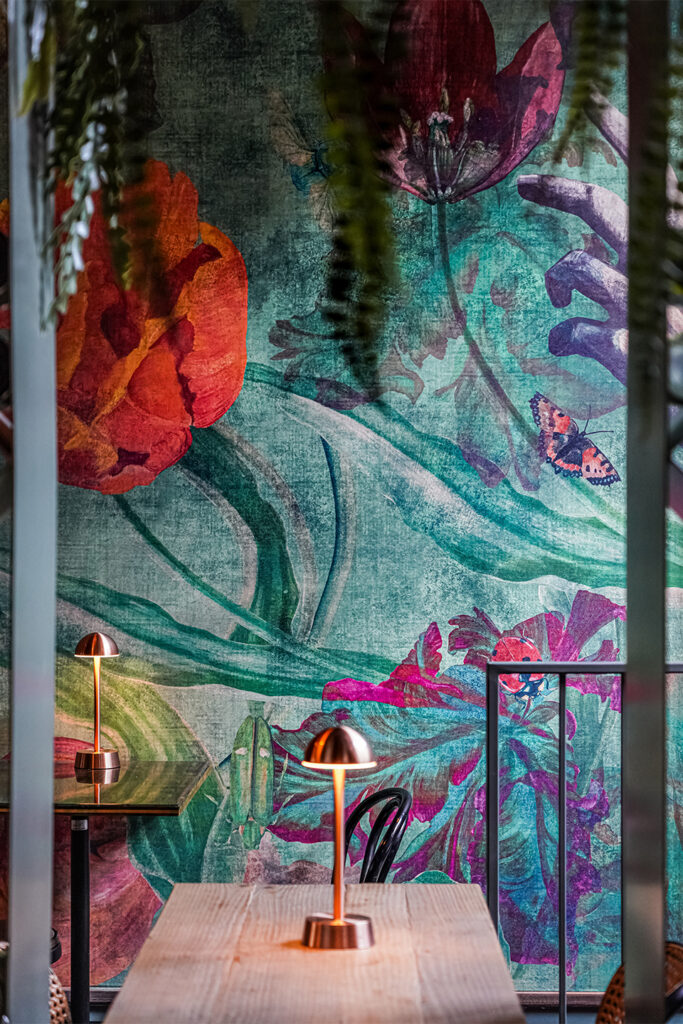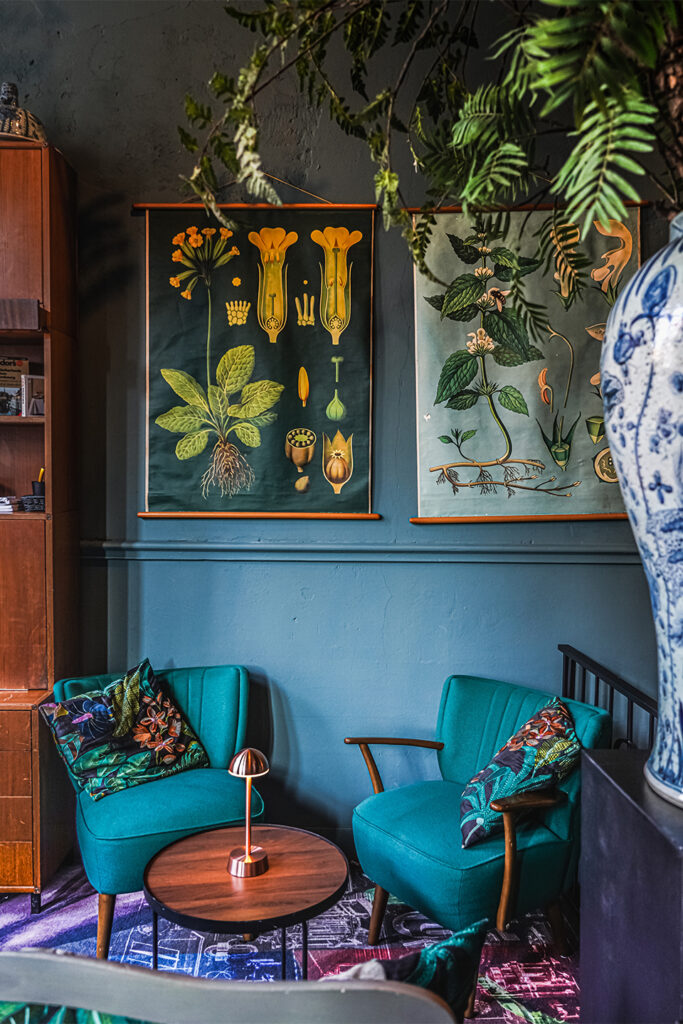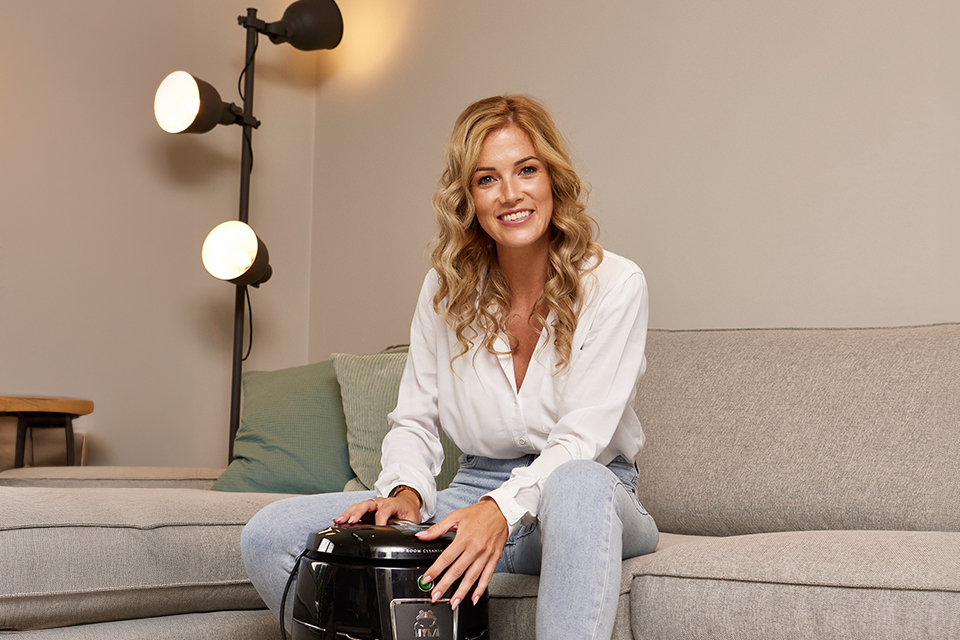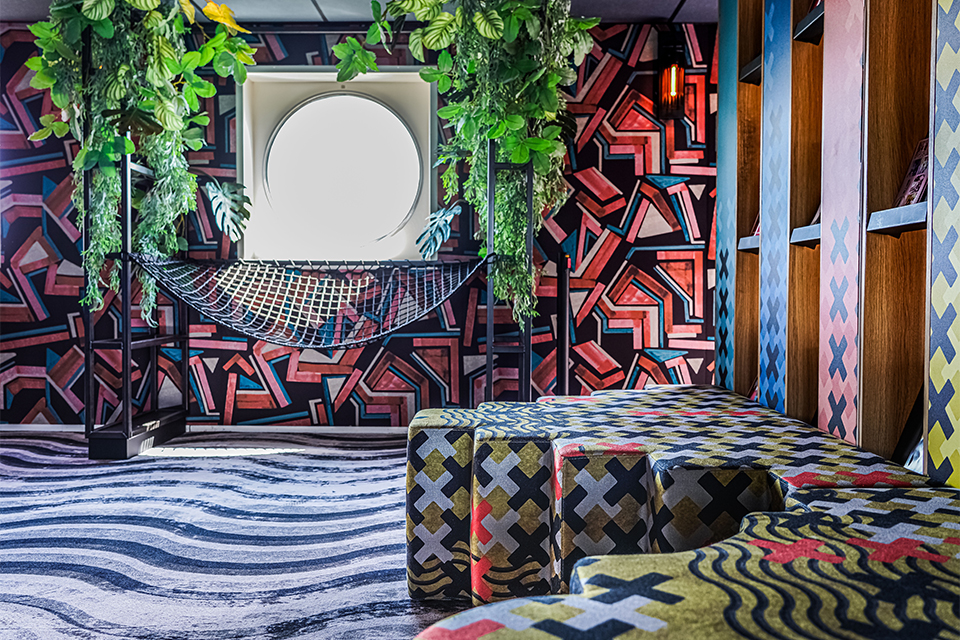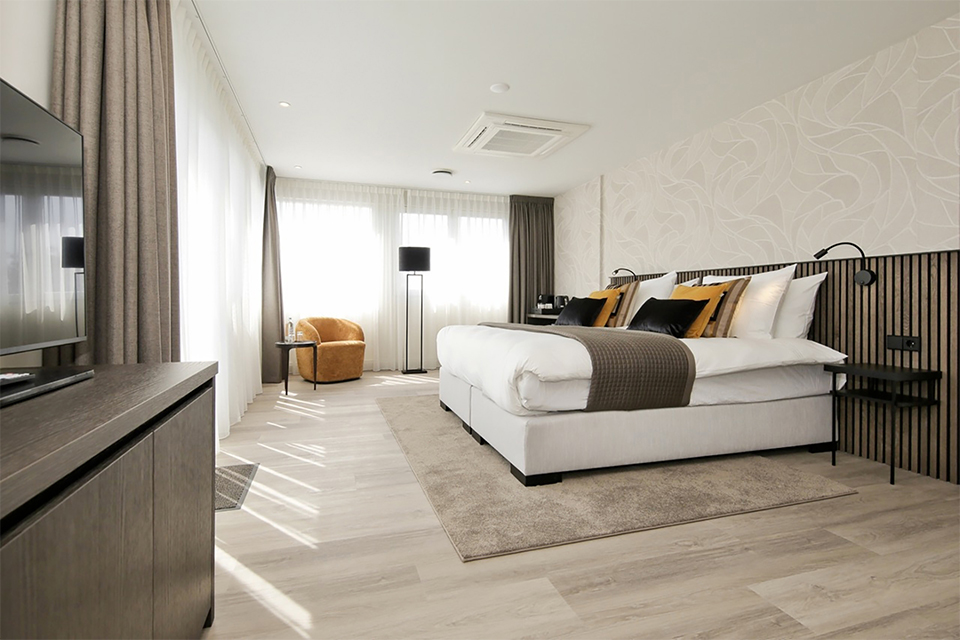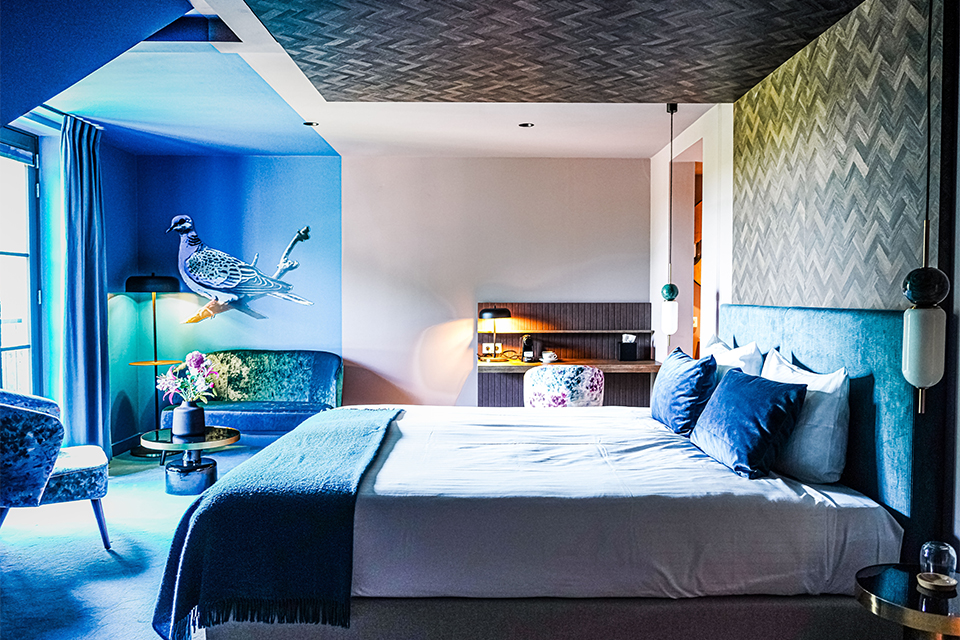
Nature as a hospitable force
Today's hotel guest is looking for more than a place to stay. Experience, comfort and connection with the environment play an increasing role in how we experience hospitality. In this search for meaningful spaces, biophilic design is rapidly gaining ground. This design approach - based on the natural connection between humans and nature - creates interiors that are not only beautiful, but also encourage well-being, rest and recovery.
In an often busy, urban context, interiors offer the perfect opportunity to create an oasis of relaxation. By consciously incorporating natural elements such as daylight, wood, plants, organic shapes and textures and earthy colours, an atmosphere is created that feels intuitively right. This effect goes beyond aesthetics; it touches on how guests feel, behave and remember.
Biophilia translated into guest experience
Amsterdam-based interior design studio ESTIDA regularly applies biophilic design in various hotel projects. Each design tells a story in which nature, atmosphere and functionality come together.
A striking example is Restaurant Roam at the Carlton Oasis Hotel. Here, the idea of travel and discovery has been translated into a warm, inviting interior where natural materials and tones predominate. "Wooden walls, soft lighting, soft felt objects inspired by plants and open sightlines create a calm, earthy atmosphere where guests immediately relax and feel at home," says interior designer Helma Kor of ESTIDA.
At Hotel Staats in Haarlem, we see a quirky yet balanced application of biophilia. The interior is a mix of green tones, natural textures and explicit references to flora and fauna. Each room has a unique character, but breathes the same thought: nature as a source of inspiration for comfort and surprise. The use of wood, plants and playful patterns makes the hotel lively without being busy.
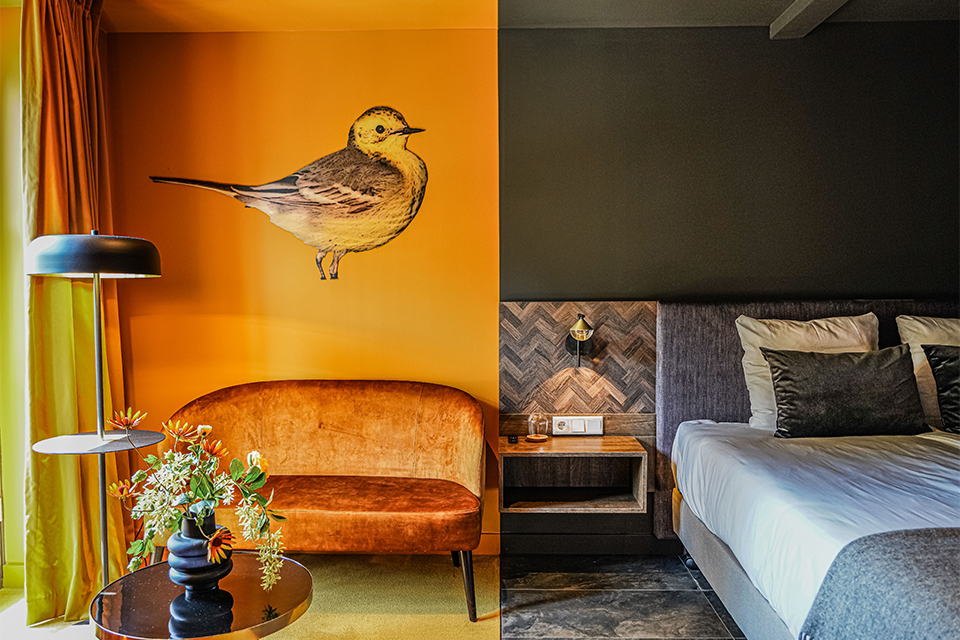
In the hotel rooms of Hotel Prins Hendrik on Texel, biophilic design has been applied to allow guests to experience a strong connection with nature. Each room is named after a Wadden bird, with colours and decorations tailored accordingly. Natural materials create a warm, soothing atmosphere. In some rooms, alcoves have been created around the bed, creating a cocoon-like feeling. Authentic signs on the wall reinforce the natural and unique character of each room. Thus, the interior concept reflects its surroundings and brings the outside in.
The power of natural hospitality
Biophilic design is proven to contribute to stress reduction, better sleep and an increased sense of well-being - important factors within the hospitality industry. In a hotel environment, elements such as plants, daylight, water, scent and sound can be subtly used to make the stay more pleasant and memorable.
In addition, biophilia perfectly matches the increasing demand for sustainability. Materials of natural origin, circular applications and respect for the environment make the design not only attractive, but also responsible. Thus, the interior becomes an extension of the hotel's vision.
A lasting impact
Biophilic design is not a trend, but an essential design approach that responds to people's deep-seated need for nature and tranquillity. For hotels, this presents an opportunity to sustainably differentiate themselves with interiors that are not only visually appealing, but also contribute to well-being and relaxation. By subtly stimulating senses and creating a sense of connection, a guest experience is created that touches deeper and stays with you longer.
Heeft u vragen over dit artikel, project of product?
Neem dan rechtstreeks contact op met ESTIDA.
 Contact opnemen
Contact opnemen
